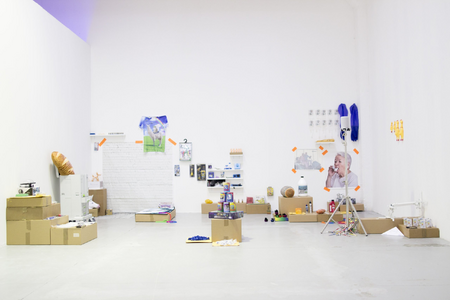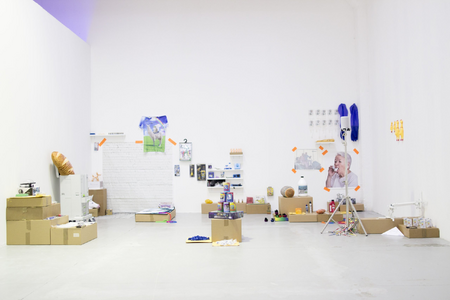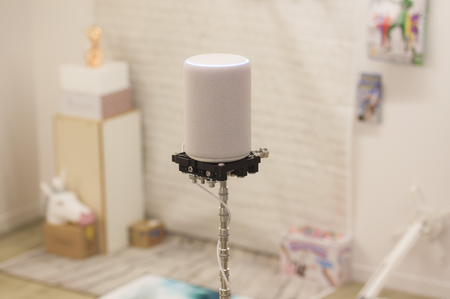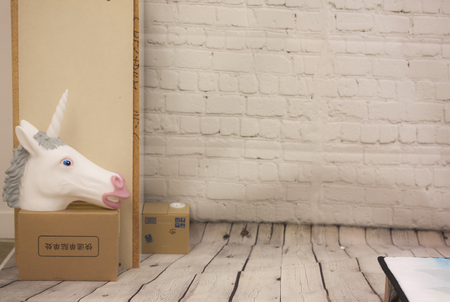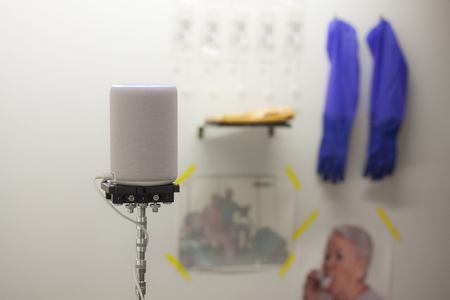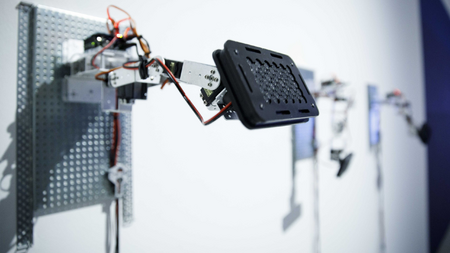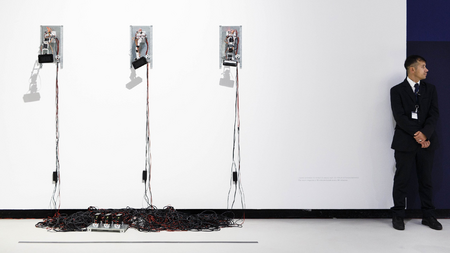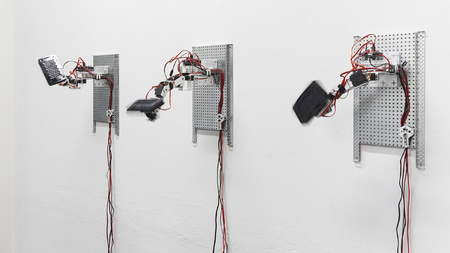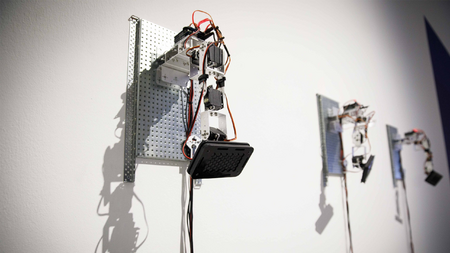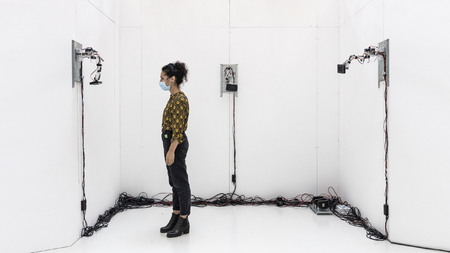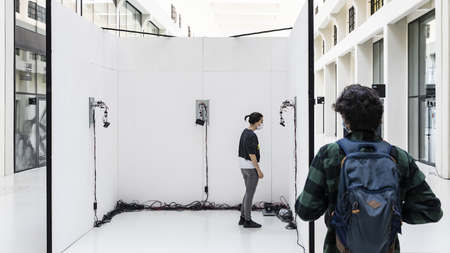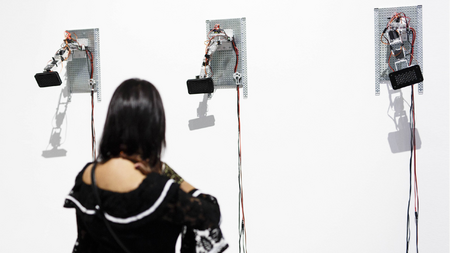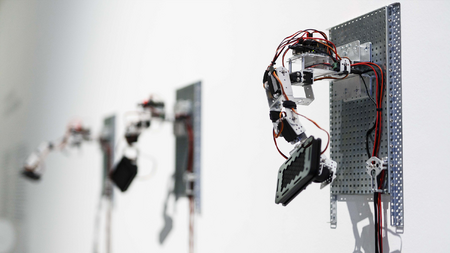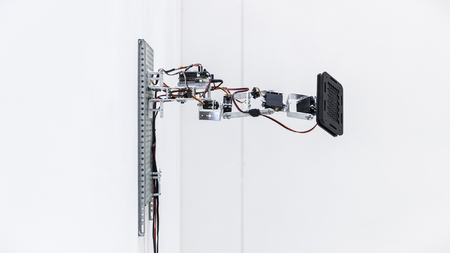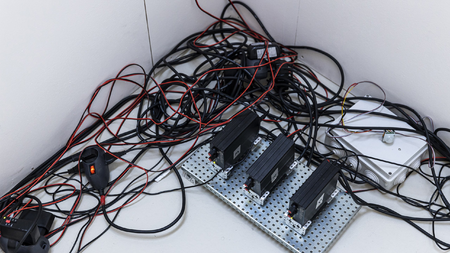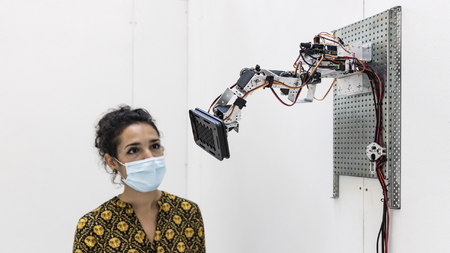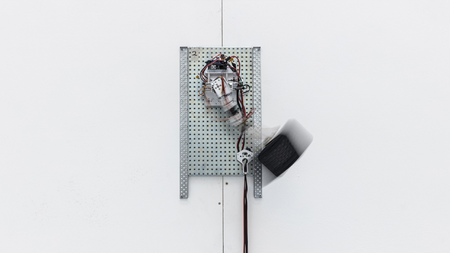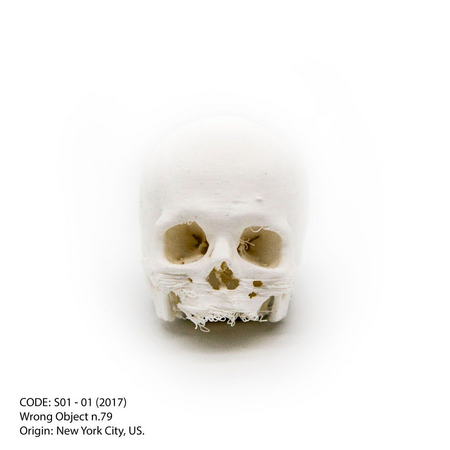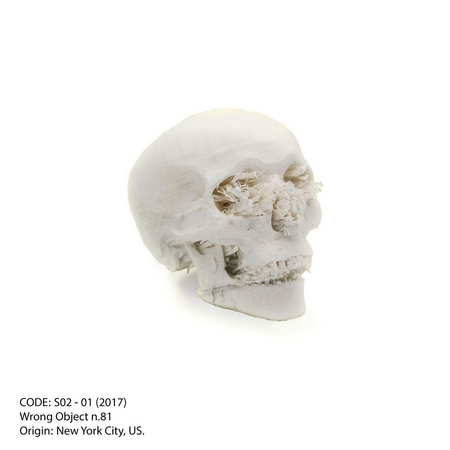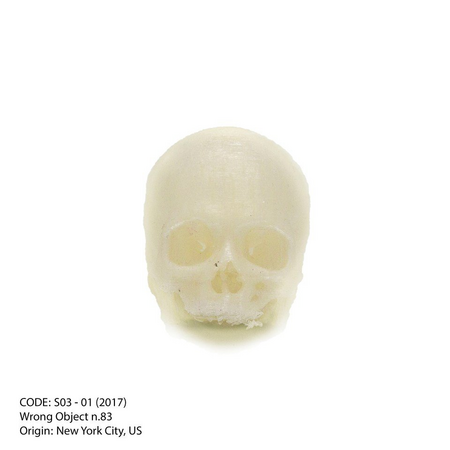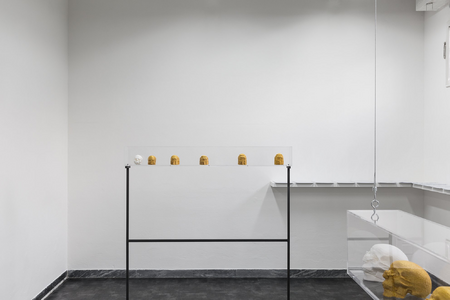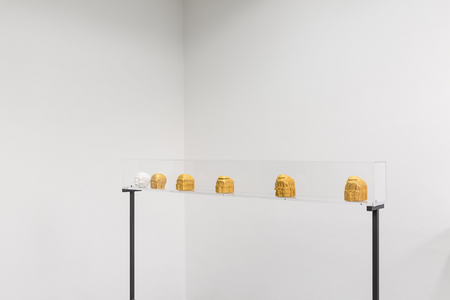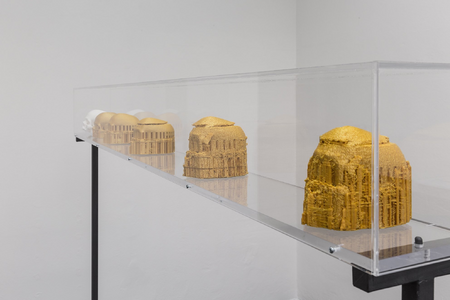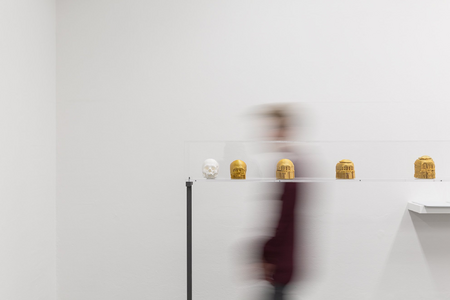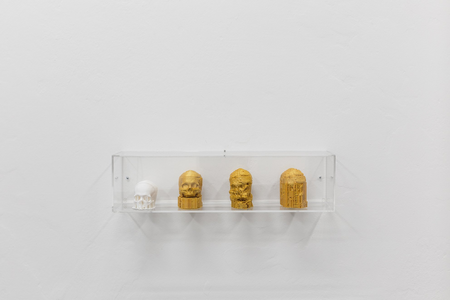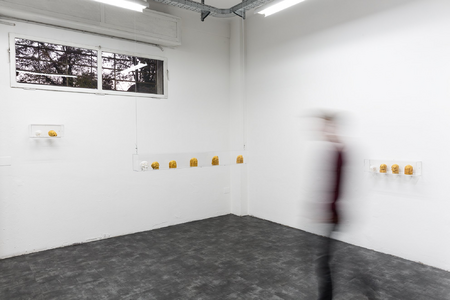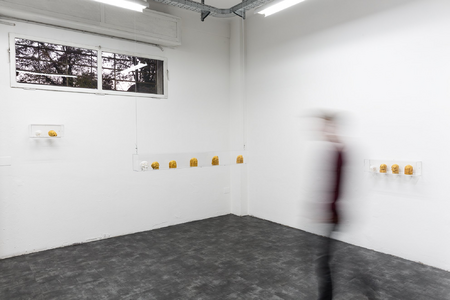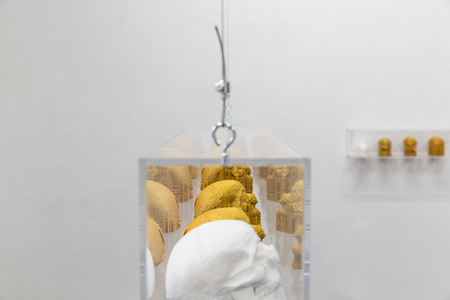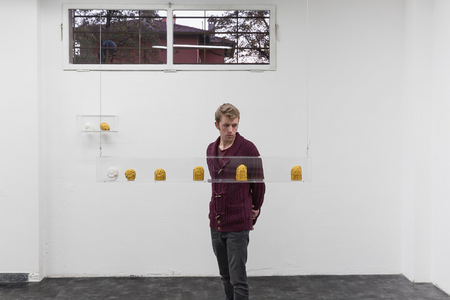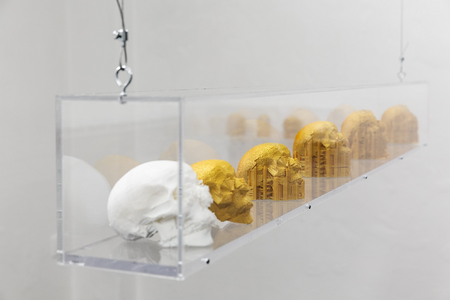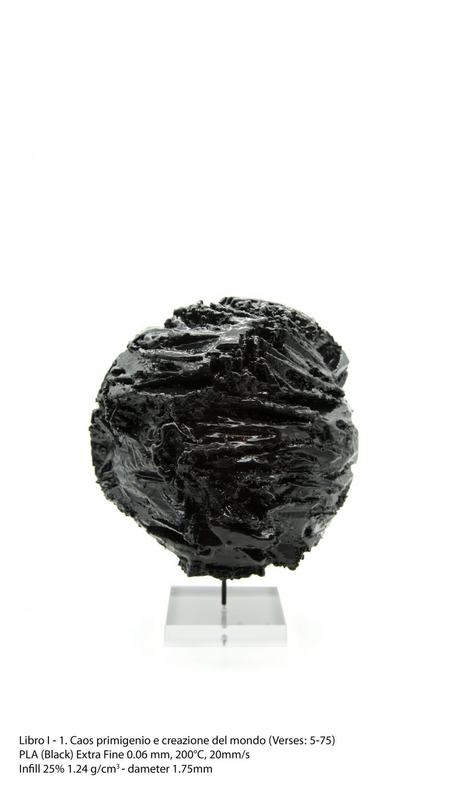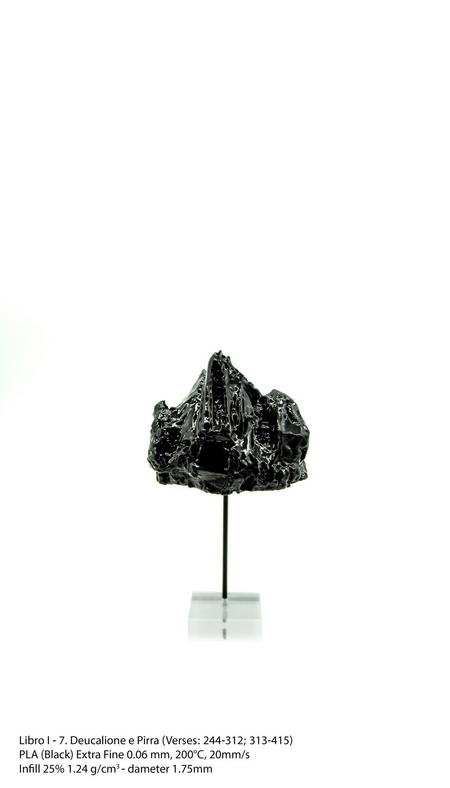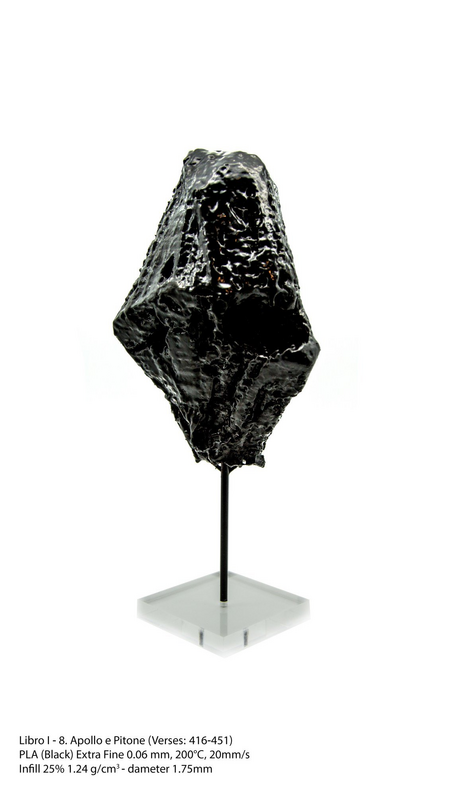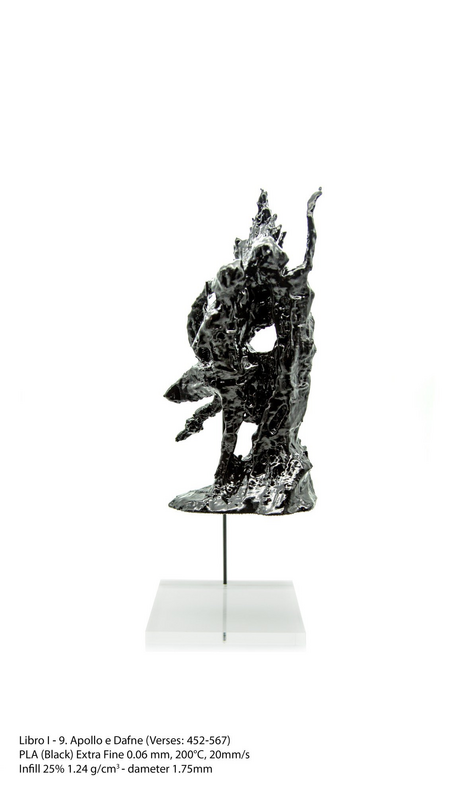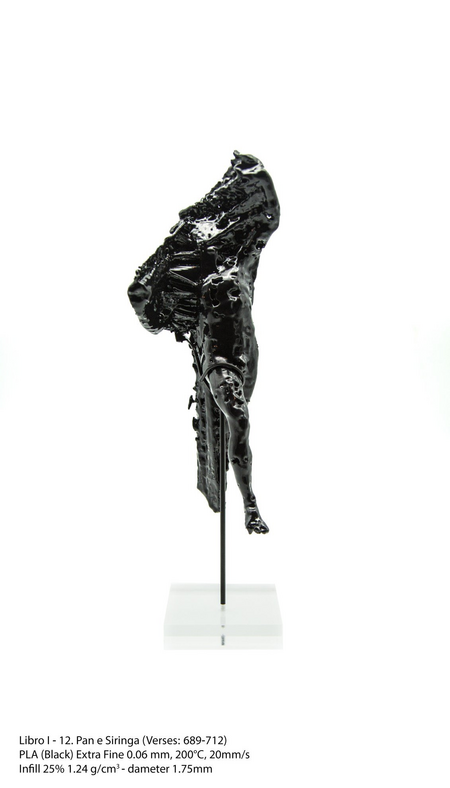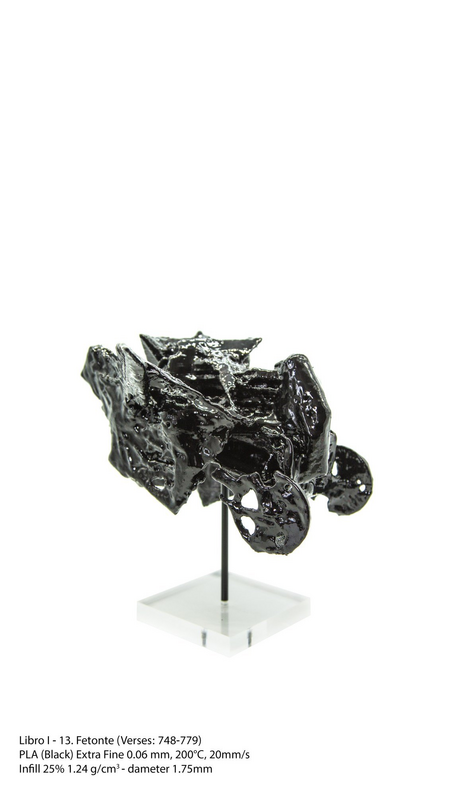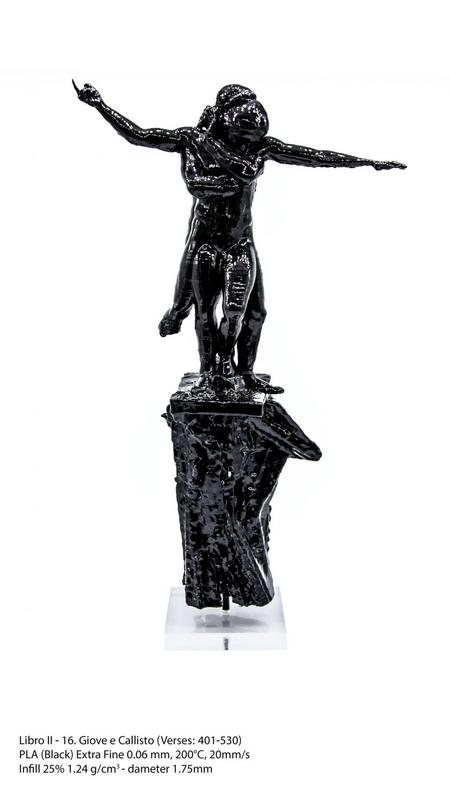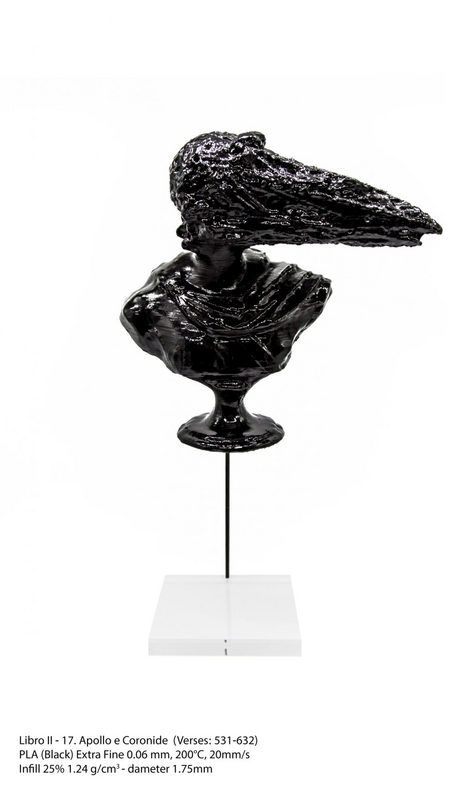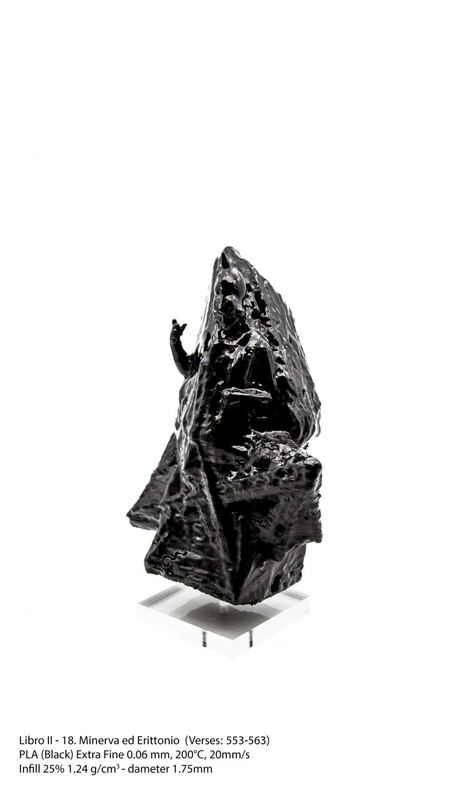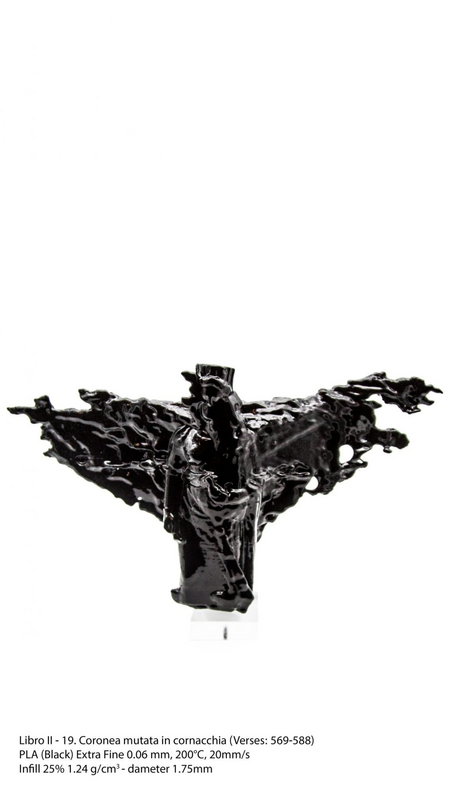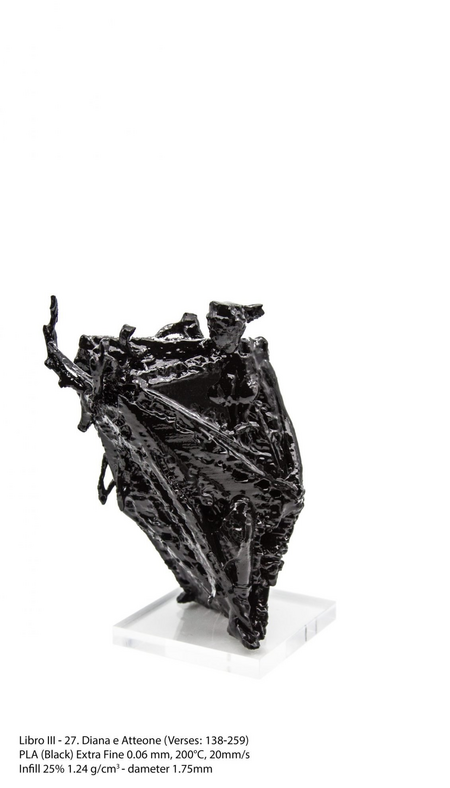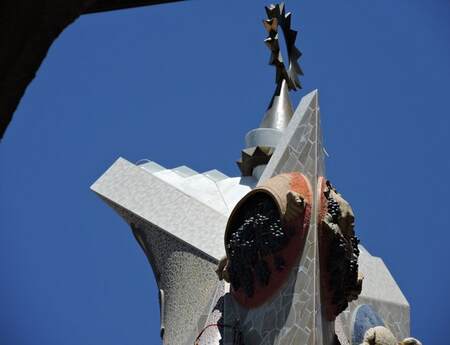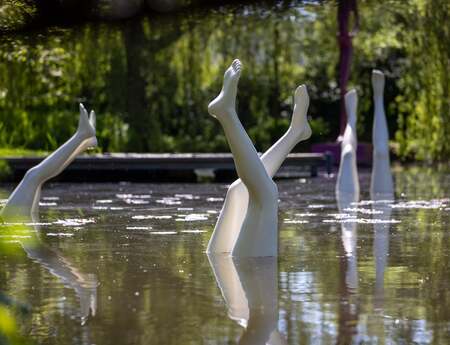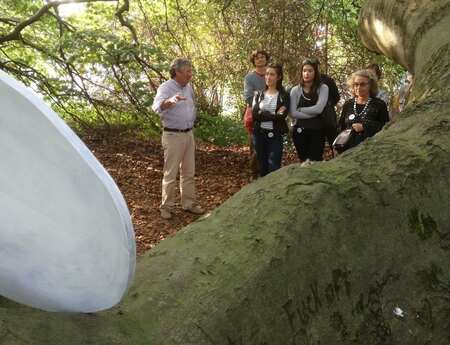Sculpting Beyond Sculpture
"Alexa, can you suggest a product for a new artwork?" Emilio Vavarella, Italian artist living in the US, posed Amazon’s well-known virtual assistant this question. In his article the artist vividly presents his different strategies of creating art – side by side with nonhuman agents.
When I received sculpture network’s invitation to talk about my work I immediately asked myself which of my works would qualify as sculptures. It is not a question that I normally ask myself while making art. My works are the result of experimenting with methods, ideas, materials, and techniques that rarely belong to the history of one specific art form. However, when I look at my work through the lenses of sculpture I notice a recurrent set of artistic strategies for making tangible the invisible operations of nonhuman agents and invisible technological systems.
This is, for example, the case of Amazon’s Cabinet of Curiosities (2019), the result of my cooperation with Alexa Voice Shopping, the artificial intelligence developed by Amazon. To produce this work I asked Alexa one question: ‘Alexa, can you suggest a product for a new artwork?’. Immediately after I bought the recommended product Alexa suggested another one, and then another one, and so on, and on… I simply followed and acquired every product suggested in this way until my production budget was entirely spent, and the work corresponds to the accumulation of products acquired through Alexa’s suggestions.
Most of the sculptural qualities of this work come from the actual products featured in the installation, but also from the way these are juxtaposed and presented, using shipping boxes as stands. We can also understand this installation as an ever-growing sculpture. Every time the work is presented it absorbs its production budget and new products are bought and added to the installation. The resulting artwork gets increasingly larger and ends up invading the exhibition space, similarly to how cancer slowly takes over a body or to how capitalism is taking over every facet of our reality.
This work is part of my long-term investigation into the hidden and invisible mechanisms of technological power. More specifically, it is the result of an ongoing reflection on the limits of human autonomy and artistic authorship in a world saturated by autonomous nonhuman agents. I like to stress that from a ‘human’ perspective the products suggested by Alexa were completely unpredictable. However, from the perspective of Amazon, each product suggestion followed a predefined logic: maximum commercial consumption. The work can be thus seen as a direct physical manifestation of obscure item-to-item matching filters linked to massive data sets and algorithms operated by Amazon. It is a way of both revealing and giving form to a field of invisible operations in which we are constantly immersed. This is, to me, a way of turning invisible networked operations into a sculptural field of relations between objects and subjects.
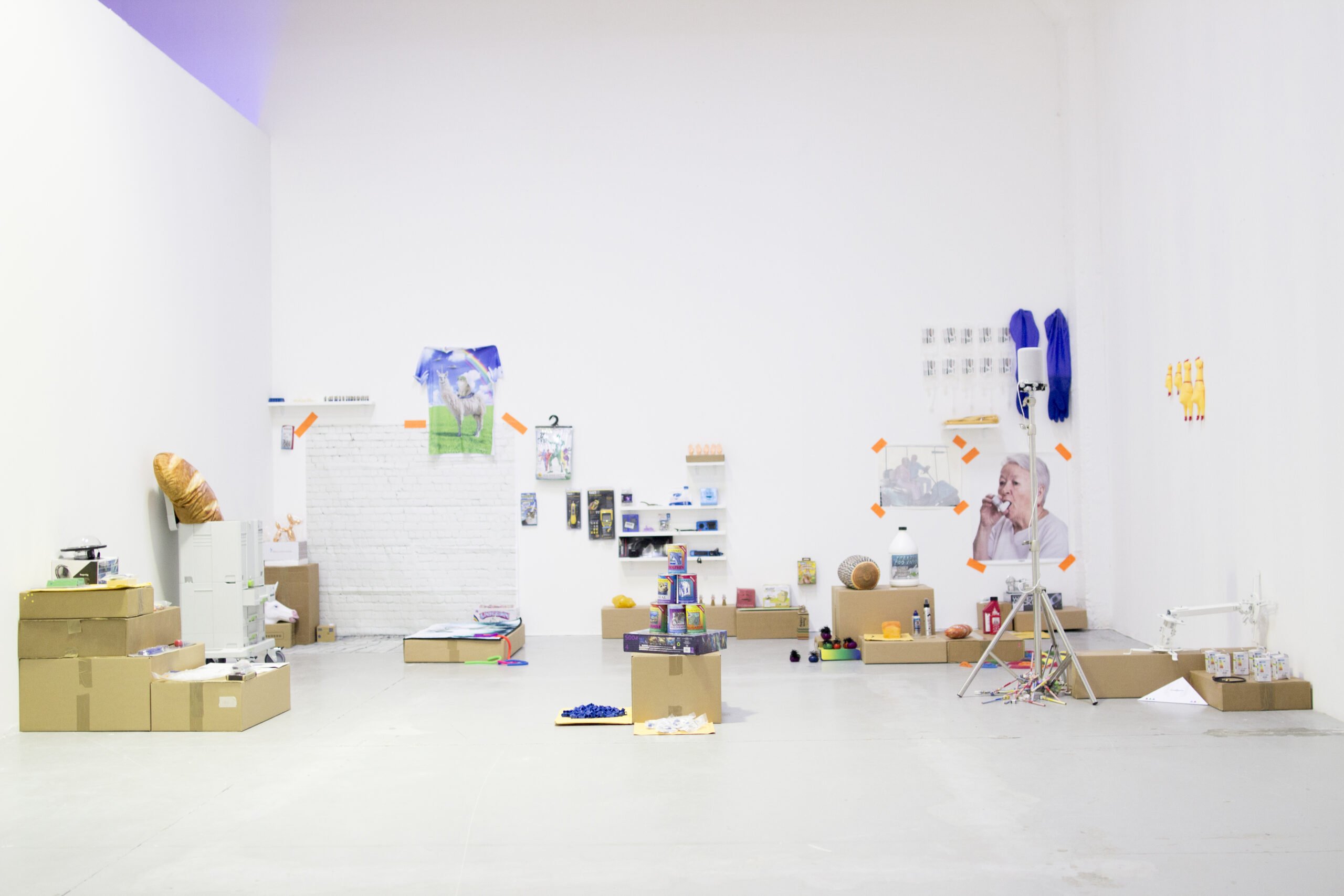
The theme of nonhuman autonomy is recurrent in my work, and it’s particularly explicit in Do You Like Cyber? (2017), a robotic immersive sound installation that broadcasts a series of short audio messages that were used by bots on the dating website Ashley Madison (which I retrieved after the site was hacked). These bots displayed anarchic and unpredictable behaviors, such as chatting with each other for no apparent reason and contacting female users even if they were programmed to only interact with users of the opposite sex.
I wanted this work to point towards the world of robotics and nonhuman autonomy in both conceptual and material ways. As in Amazon’s Cabinet of Curiosities, I thought about this artwork as a field of relations that encompasses the physical work, the public and the exhibition space. This led me to the production of swiveling robotic arms that move in complete autonomy while broadcasting sound. To each arm is attached a parametric speaker. These speakers are similar to lasers in that they radiate sound in a single focused direction (as opposed to conventional speakers, which spread the sound in all directions). Additionally, the sound bounces off hard surfaces such as walls, creating virtual sound sources and making it difficult to detect its origin. Because of their engineering, the public was both engaged and eluded by the fragmented symphony of broken conversations that, bouncing from one side to the other of the exhibition space, resulted in an elusive sensorial experience.
The production of these arms reflects my desire to produce objects that defy complete understanding. This was my way of addressing a physical reality in which we literally move through fields of information that constantly excite but also partially escape our senses. Overall, the robotic arms functioned as physical agents within a field of operations that they engendered and that included their movement, sound, and the movements of the public.
In these two projects I just discussed you may have noticed a certain openness to the unpredictable or the unexpected. For example I had no idea what Amazon’s Cabinet of Curiosities would look like before Amazon Alexa suggested its products. Similarly, the messages broadcasted in Do You Like Cyber? were chosen by Ashley Madison’s bots, and the movements of the arms are randomized. The next two projects embrace the idea of technical unpredictability even more. In 2017 I began working on two sculptural projects. The Other Shape of Things - 1. Failed Objects is the first of the two. It is produced through heterogeneous technologies and techniques, including 3D scanners, data manipulation and 3D printing and consists of a process-based and ongoing series of sculptures. The starting point of this work is a collection of hundreds of ‘failed objects’: 3D prints that I collected before they were destroyed by 3D printing labs all over the world. These objects were considered ‘failed’ for different reasons: some had not been properly printed and most had distortions, imperfections, and glitches of various kinds.
Each found object I collected was first digitalized using a 3D scanner, then reprinted using a 3D printer in order to create a second object. This second object was then scanned, and reprinted, creating a third object, and so on. After each step, the mediation and translation from digital to physical and from 3D scanner to 3D printer produced further unpredictable glitches and distortions – which in turn constituted new physical artifacts. I reproduced each found object until satisfied with the series of objects derived from it. This sculptural production is entirely delegated to a system of automatic analog-to-digital translations. Furthermore, the aesthetic of the objects is strongly defined by the software and hardware capabilities of the technologies that I use. In this sense, my 3D scanner and my 3D printer are more than tools, they are artistic collaborators that co-produce the work.
The second sculptural project in this series is entitled The Other Shape of Things - 2. Datamorphosis. It consists of 181 sculptures divided in 15 groups, called Libri (Books), based on the 15 books that comprise Ovid’s poem The Metamorphoses. Each sculpture takes the name of one of Ovid’s myths and is produced by forcing a computer to interpret Latin verses about metamorphosis as coding instructions for the production of new sculptural forms.
To produce each sculpture, I simply substituted the alphanumeric lines of code used by the computer to render the sculpture with the corresponding original Latin verses of poetry written by Ovid. For example, the first myth, “Primordial Chaos and Origin of the World,” corresponds to lines 5-75 of Ovid’s Libro I, which I inserted in place of the lines of code 5-75 of the first digital sculpture. My operation, repeated analogously for each sculpture, forces the Latin poem to function as source code for tridimensional forms. Even in this case I have no control over how the computer will interpret the Latin poem – the final shape of the sculpture is the result of a metamorphosis of data determined by my 3D printer’s settings.
In a way, these four projects summarize not only my approach to sculpture making but my general approach to artistic production as well. They express my way of giving form to concepts while producing new fields of aesthetic experience. And they show my attempts to freeze, even if only for a fleeting moment, processes and operations that are constantly unfolding beyond my direct control.
Author: Emilio Vavarella is an Italian artist working at the intersection of interdisciplinary art practice, theoretical research and media experimentation. For sculpture network he explored the question of when and why artworks qualify as sculptures.
Published: July 2021
